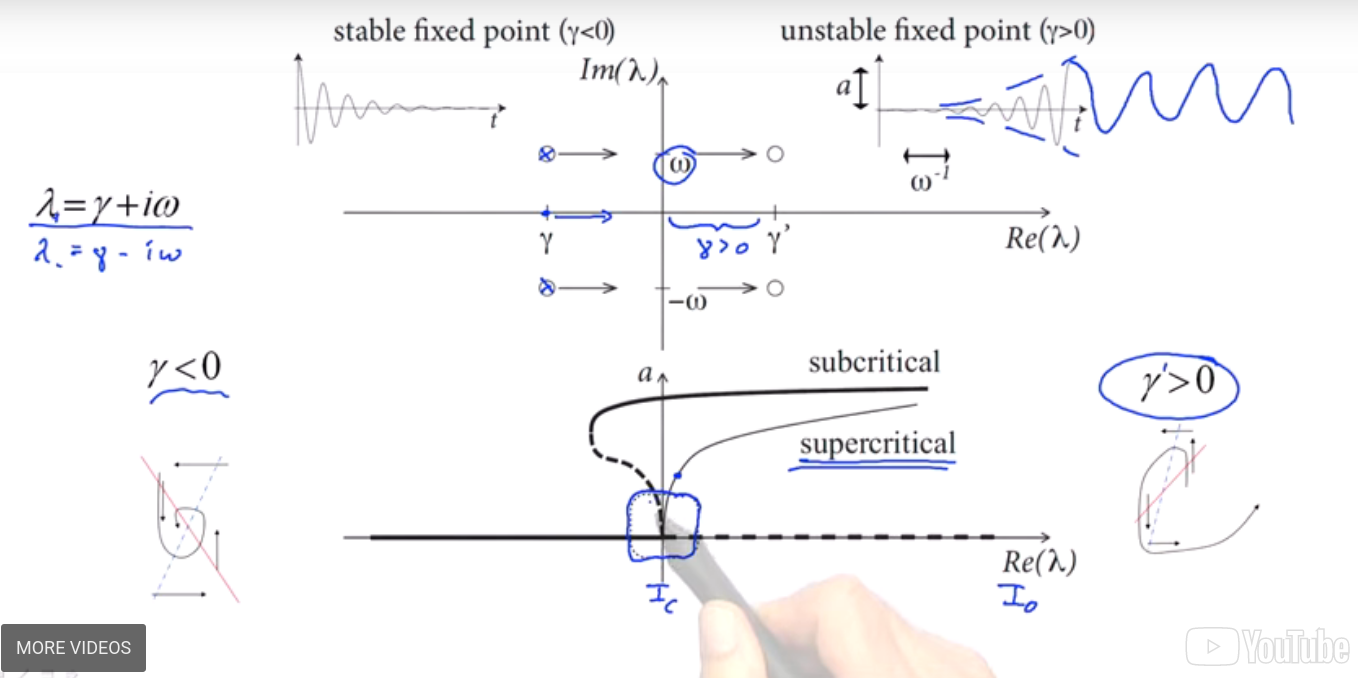These are all very good questions.
The stable oscillation in the subcritical case has indeed a larger amplitude than in the supercritical case.
The difference between subcritical and supercritical Hopf bifurcation is the stability of the periodic solution that arises at the bifurcation. If the periodic solution is stable, the bifurcation is supercritical; if it is unstable, it is subcritical. Mathematically, one tool to tell these two cases apart is the Hopf Bifurcation Theorem but this goes beyond the scope of this course.
In both cases, it is a type 2 model.
A detailed explanation of the plot at the bottom goes beyond the scope of this course. Briefly, dashed lines represent unstable fixed point/periodic solutions whereas full lines represent stable fixed point/periodic solutions. The fact that the line "bends backward" of forward depends on the eigenvalues for which the periodic solution exists (but this again goes beyond the scope of the course).
Fully explaining this very dense slide would involve giving a short lecture of Hopf bifurcation, which is not the point. However, it is important to remember that in some cases (in the subcritical case), the stable oscillation is not given by the local analysis at the bifurcation (which only gives you the unstable periodic solution).
